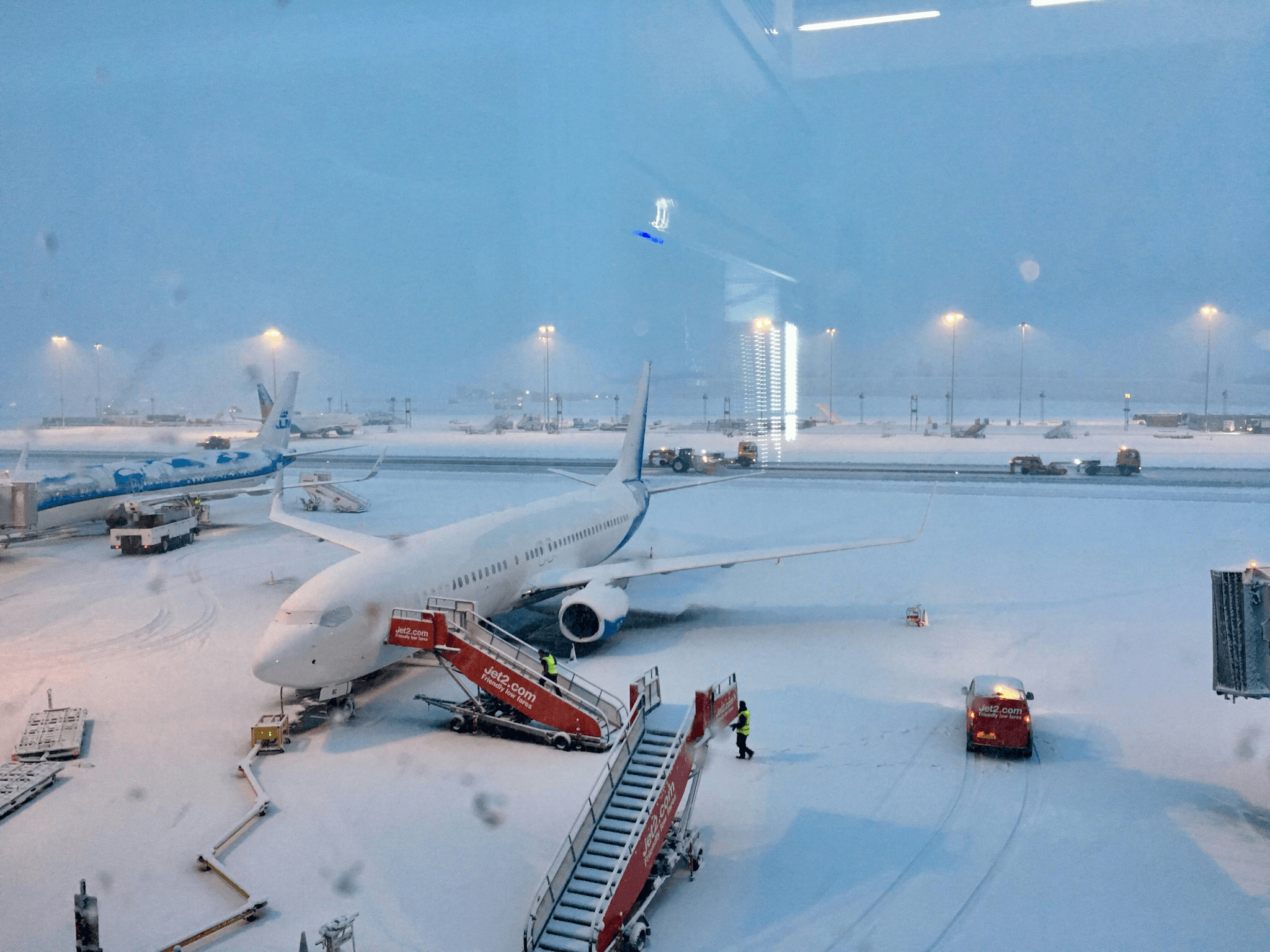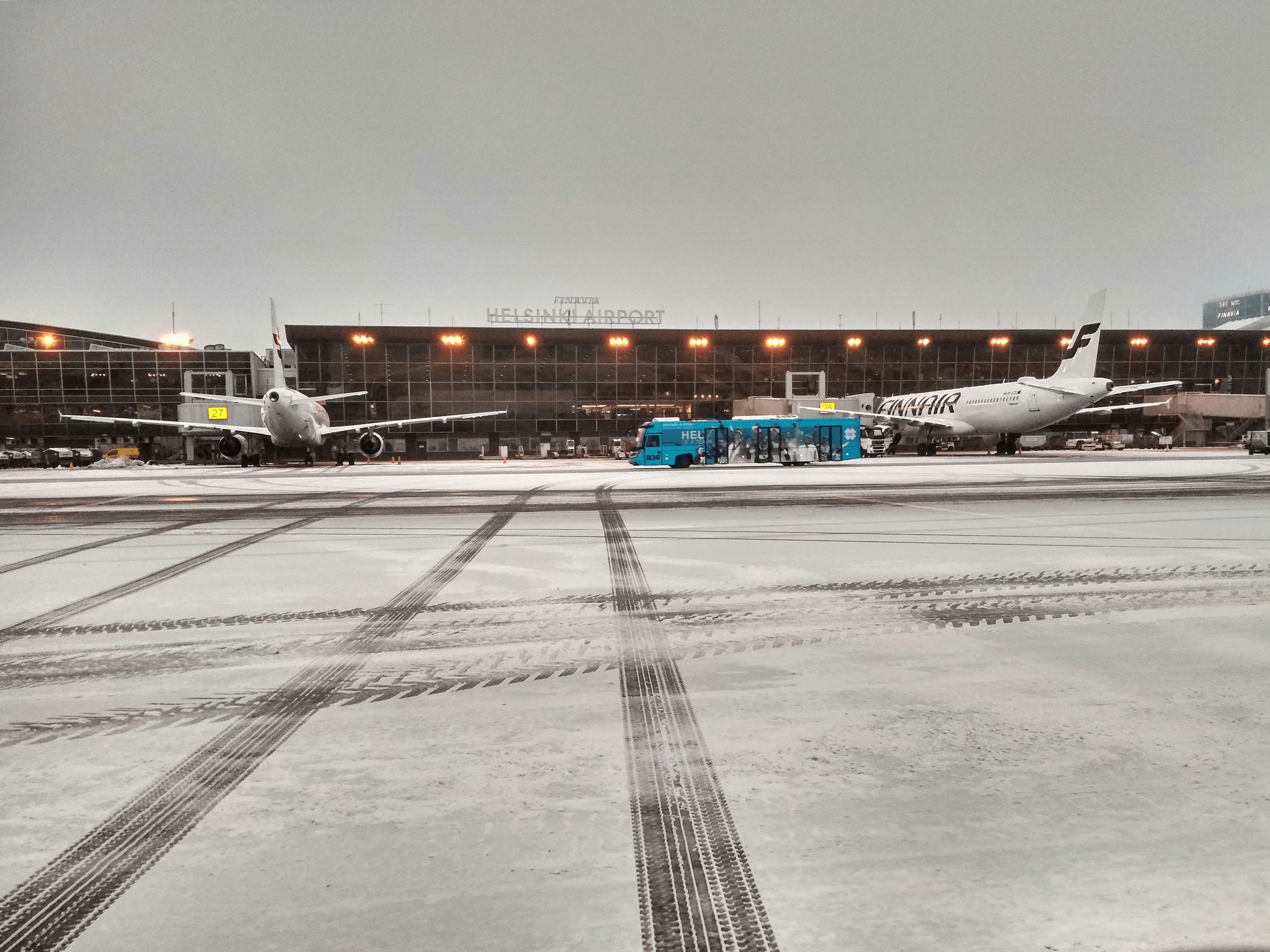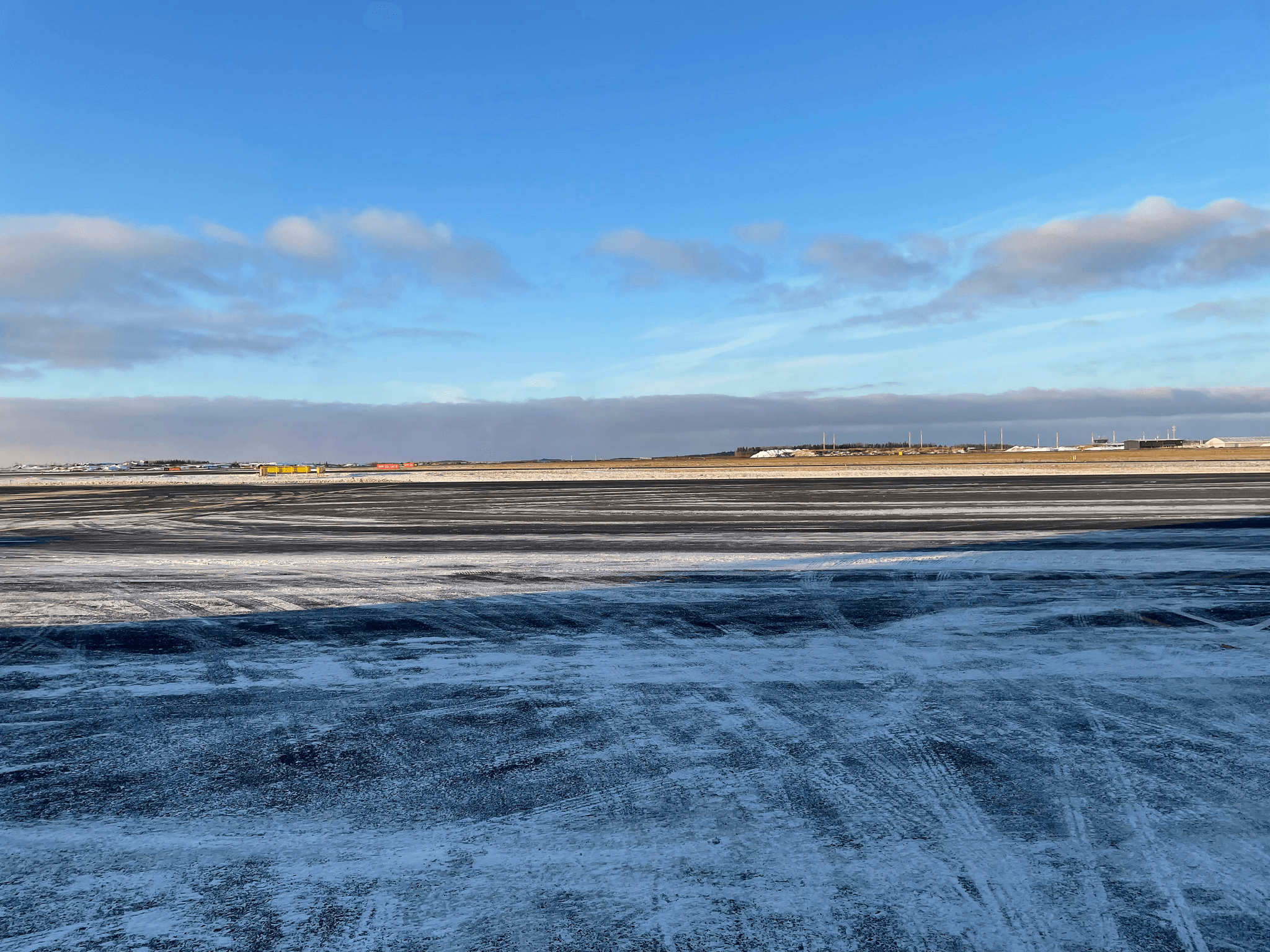Introduction

When winter weather strikes, the smooth operation of airports can come to a screeching halt without effective airport snow removal equipment. The importance of having the right machinery cannot be overstated; it ensures that runways and taxiways remain clear, allowing for safe takeoffs and landings. As travelers depend on timely flights, airports must prioritize their snow management strategies to minimize disruptions.
Importance of Airport Snow Removal Equipment
Airport snow removal equipment is crucial for maintaining operational efficiency during snowy conditions. It includes advanced machines like the TV 2000 snowblower, designed specifically for large-scale snow clearing tasks. Without this specialized equipment, airports would struggle to keep runways and taxiways safe for aircraft operations.
Challenges Airports Face During Snowfall
Airports face numerous challenges when it snows, including the risk of slippery runways that can hinder landing procedures. Heavy snowfall can quickly accumulate, making it difficult to keep surfaces clear and safe for planes. Additionally, airports must address questions such as Can planes land on snow-covered runways? while ensuring they have effective strategies in place to manage these winter challenges.
Overview of Effective Snow Management
Effective snow management involves a combination of preemptive measures and real-time monitoring to ensure safety during winter storms. Airports utilize various techniques to get ice off runways and maintain operational readiness despite adverse conditions. By investing in airport snow removal equipment for sale and implementing best practices, they can tackle winter weather head-on and keep flights running smoothly.
Types of Airport Snow Removal Equipment

When it comes to tackling the winter wonderland that can blanket airport runways, having the right airport snow removal equipment is crucial. Airports utilize an array of specialized machines designed not just to clear snow but also to ensure safety and efficiency during operations. From plows to blowers, each piece of equipment plays a vital role in maintaining clear pathways for aircraft and ground services alike.
Haisen's Jet Snow Blower: Advanced Technology
One standout piece in the realm of airport snow removal equipment is Haisen's Jet Snow Blower. This innovative machine employs advanced technology that allows for rapid snow clearance while minimizing damage to runway surfaces. With its powerful jet propulsion system, it effectively blasts away accumulated snow, making it easier for airports to manage heavy snowfall.
So, what do airports use to melt snow? Haisen’s Jet Snow Blower isn’t just about moving snow; it can also incorporate heated air features that help with melting ice as well. This dual functionality makes it an asset during those particularly frosty months when traditional methods may fall short.
If you're wondering how much is the TV 2000 snowblower or if there are options like Haisen's model available for sale, you'll find that investing in high-quality airport snow removal equipment pays off by reducing delays and enhancing safety. In a world where every minute counts, especially when dealing with heavy snowfall, having reliable machinery like this can mean the difference between chaos and smooth operations.
Airports have their hands full when it snows—ensuring runways remain clear requires coordination among various teams and equipment types. Heavy snowfall can indeed make airport runways slippery; that's why machines such as the Haisen Jet Snow Blower are essential in keeping surfaces safe for landing and takeoff. Can planes land on snow-covered runways? Yes, but only if those runways have been adequately cleared and treated with appropriate de-icing measures.
In conclusion, investing in advanced airport snow removal equipment like Haisen’s Jet Snow Blower not only enhances operational efficiency but also prioritizes safety during winter weather challenges. By understanding how these machines work together with other tools at airports—like plows and de-icing trucks—airport management can better prepare for whatever Mother Nature throws their way.
Best Practices for Operating Snow Equipment

Operating airport snow removal equipment efficiently is essential for maintaining safety and accessibility during winter months. Airports face unique challenges when it snows, and having well-trained personnel can make all the difference. By implementing best practices, airports can ensure that their snow management operations run smoothly and effectively.
Training Personnel for Efficiency
Training personnel in the use of airport snow removal equipment is vital to maximizing efficiency during snow events. Staff should be well-versed in the operation of various machines, including the TV 2000 snowblower, which is known for its effectiveness in heavy snowfall conditions. Regular training sessions not only enhance skills but also boost confidence among team members, ensuring they know how to respond swiftly when airports need to act quickly during a storm.
Furthermore, understanding how to monitor weather patterns helps teams prepare adequately before a snowfall begins. Knowing what do airports do when it snows allows staff to strategize their efforts better and prioritize tasks based on real-time conditions. Ultimately, investing in training leads to faster response times and improved safety on runways and taxiways.
Regular Maintenance and Inspections
Regular maintenance and inspections of airport snow removal equipment are crucial for optimal performance throughout the winter season. Just like any machinery, consistent upkeep prevents malfunctions that could hinder operations when it matters most—like during heavy snowfall where there’s no time to waste! Ensuring that all equipment is functioning properly means fewer surprises when trying to clear runways covered in snow or ice.
Airports should schedule routine checks on critical components such as blades, engines, and hydraulic systems of their snow removal fleet. This proactive approach minimizes downtime due to repairs while maximizing the lifespan of expensive machinery like the TV 2000 snowblower—an investment worth its weight in gold! After all, what good is top-notch airport snow removal equipment if it’s not ready for action?
Strategic Scheduling of Equipment Use
Strategic scheduling of airport snow removal equipment usage can significantly enhance overall efficiency during snowy conditions. Airports must anticipate weather forecasts closely; knowing when a storm will hit allows them to deploy resources effectively before the first flake falls—this preemptive measure can save both time and money! By planning ahead, airports can avoid overwhelming their teams with last-minute demands while ensuring every inch of runway remains safe.
Moreover, coordination between different ground services ensures that everyone knows who’s doing what at any given time—this teamwork goes a long way toward preventing chaos during peak snowfall periods! Understanding how do they get ice off runways efficiently involves collaboration among multiple departments working towards common goals: safety first! With everything running like clockwork thanks to strategic scheduling, planes can continue landing safely even if conditions get slippery.
Effective Strategies for Snow and Ice Management

Managing snow and ice at airports is a multifaceted challenge that requires proactive strategies to ensure safety and efficiency. By implementing effective measures before, during, and after snowfall, airports can minimize disruptions caused by winter weather. The right airport snow removal equipment plays a critical role in these strategies, ensuring runways remain clear for safe operations.
Preemptive Measures: Before the Snow Falls
Preparation is key when it comes to airport snow management. Airports often deploy preemptive measures such as applying anti-icing agents or using specialized airport snow removal equipment to mitigate the effects of incoming snowfall. These proactive steps can significantly reduce the need for extensive snow removal efforts later on, saving both time and resources.
In addition to using chemical agents that prevent ice formation, airports also conduct routine inspections of their equipment before winter sets in. This ensures that all machinery—like the TV 2000 snowblower—is ready to go when needed. And let's not forget about training personnel; ensuring staff are well-prepared allows for a smooth operation when the first flakes begin to fall.
Real-Time Monitoring of Weather Conditions
Staying ahead of changing weather patterns is crucial for effective snow management at airports. Utilizing advanced technology for real-time monitoring helps ground crews anticipate snowfall and adjust their operations accordingly. With accurate forecasts, airports can deploy their airport snow removal equipment at just the right moment, optimizing efficiency.
Weather stations equipped with sensors provide critical data on temperature fluctuations and precipitation levels, allowing for timely responses to evolving conditions. This way, ground services can effectively determine what do airports do when it snows: they mobilize resources quickly while keeping safety as a top priority. Additionally, understanding how heavy snow can make airport runways slippery helps inform decisions about runway closures or delays.
Coordination Between Ground Services
Effective communication between various ground services is essential during winter operations at airports. When it snows heavily, coordination ensures that everyone—from maintenance teams operating airport snow removal equipment to air traffic controllers—works in harmony to maintain safe conditions on runways and taxiways. This collaboration also helps address questions like “Can planes land on snow-covered runways?” by ensuring that all parties are informed about runway status.
Having designated roles within teams streamlines processes during intense snowfall events; this prevents confusion and promotes quick decision-making regarding how do they get ice off runways efficiently without compromising safety protocols. Furthermore, regular meetings throughout winter months foster an environment where everyone is prepared for challenges ahead—because let’s face it: nobody likes surprises when it comes to managing winter weather!
Economic Aspects of Airport Snow Removal

When it comes to keeping runways safe and operational during winter months, the economic implications of airport snow removal equipment cannot be overlooked. Airports invest significantly in these resources to ensure they can effectively manage snowfall and maintain safety standards. Understanding the costs associated with this equipment helps airports make informed decisions about their snow management strategies.
Cost Analysis of Airport Snow Removal Equipment
The cost analysis of airport snow removal equipment typically involves evaluating both initial purchase prices and ongoing maintenance expenses. Equipment such as jet snow blowers, plows, and de-icing machines can range from tens of thousands to several million dollars depending on their capabilities and technology. Airports must also consider the cost-effectiveness of each piece of equipment in terms of efficiency, reliability, and lifespan when deciding what do airports use to melt snow.
Additionally, it's important for airports to analyze the potential financial impact of not investing adequately in airport snow removal equipment. Delays caused by heavy snowfall can lead to significant operational disruptions that affect airline schedules and passenger satisfaction. By ensuring they have the necessary tools at their disposal, airports can mitigate these risks while maintaining a steady flow of operations even during challenging weather conditions.
How Much is the TV 2000 Snowblower?
The TV 2000 snowblower is one piece of airport snow removal equipment that has garnered attention for its effectiveness in clearing runways quickly. On average, this specialized machine costs approximately $300,000; however, prices may vary based on features and specifications included with the unit. Given its advanced technology designed for efficient snow removal, many airports see this as a worthwhile investment.
When considering how much is the TV 2000 snowblower specifically, it’s essential to factor in not just upfront costs but also long-term savings due to reduced labor hours and increased operational efficiency during winter storms. The ability to clear runways swiftly means that airlines can continue landing planes safely even when conditions are less than ideal—an invaluable advantage for any busy airport facing inclement weather conditions.
Furthermore, many vendors offer financing options or leasing arrangements for those looking at airport snow removal equipment for sale but hesitant about high upfront costs. This flexibility allows airports with varying budgets to access high-performance machinery without compromising safety or efficiency during peak snowfall periods.
Budgeting for Seasonal Snow Management
Budgeting for seasonal snow management requires careful planning and foresight from airport administrators who must allocate funds wisely throughout the year. This includes estimating costs related not only to purchasing or leasing airport snow removal equipment but also ongoing maintenance expenses associated with keeping machinery in top condition throughout winter months. Additionally, airports should budget for labor costs tied directly into operating this equipment efficiently.
Airports often set aside contingency funds specifically designated for unexpected heavy snowfall events that may exceed regular operational budgets; after all—can heavy snow make airport runways slippery? If so, having extra financial resources available ensures that immediate action can be taken without delay when adverse weather strikes unexpectedly.
Moreover, effective budgeting involves continuous monitoring of weather patterns alongside historical data regarding past snowfall events; understanding what do airports do when it snows helps them plan better each season! By anticipating potential challenges ahead—not just financially but logistically—airports position themselves well against winter's unpredictable nature while ensuring passenger safety remains paramount throughout every stormy season.
Safety Protocols During Snow Operations

When winter weather strikes, ensuring the safety of airport operations becomes paramount. Effective use of airport snow removal equipment is essential to maintain clear runways and taxiways, allowing for safe takeoffs and landings. Airports must implement comprehensive safety protocols to manage the challenges posed by snowfall and icy conditions.
Ensuring Clear Runways and Taxiways
The first line of defense against winter weather is a well-coordinated snow removal strategy that emphasizes the importance of keeping runways and taxiways clear. Airport snow removal equipment, such as plows, blowers, and de-icing vehicles, plays a crucial role in this process. Regular inspections and timely deployment are key factors in ensuring that these surfaces remain operational during adverse weather conditions.
To effectively manage runway conditions, airports utilize various methods to melt snow, including liquid de-icers and heated pavement systems. These solutions help to prevent ice buildup while enhancing traction for aircraft during takeoff and landing. By staying proactive with their airport snow removal equipment, airports can minimize disruptions caused by winter weather.
Handling Slippery Conditions: Can Planes Land on Snow?
A common question during snowy conditions is whether planes can land on snow-covered runways. The answer is nuanced; while aircraft are designed to handle some level of snowfall, heavy accumulations can indeed make airport runways slippery. To mitigate these risks, airports rely on specialized airport snow removal equipment to clear excessive snow accumulation promptly.
In addition to physical removal of snow, airports also apply anti-icing agents that help reduce slipperiness before it becomes a problem. This dual approach ensures that even if light snowfall occurs just before an arrival or departure, planes can still operate safely without significant delays. Ultimately, understanding how much is the TV 2000 snowblower or other similar machines helps airports make informed decisions about their winter operations.
Emergency Procedures When Snow Accumulates
Despite best efforts in preparation and execution, emergency situations may still arise when heavy snowfall overwhelms an airport's resources. In such cases, having established emergency procedures becomes critical for maintaining safety and operational integrity at the facility. These procedures often include rapid deployment of additional airport snow removal equipment for sale or rental as needed.
Airports must also communicate effectively with airlines regarding changes in flight schedules due to inclement weather conditions—keeping passengers informed helps alleviate confusion during stressful travel times. Additionally, training personnel on emergency protocols ensures everyone knows how to respond swiftly when faced with sudden challenges posed by accumulating snow or ice on runways.
By implementing robust safety protocols during snowy operations—focusing on runway maintenance strategies as well as effective communication—airports can navigate through winter challenges more efficiently than ever before.
Conclusion
In the world of aviation, snow removal is not just a seasonal inconvenience; it’s a vital operation that ensures safety and efficiency. The right airport snow removal equipment can make all the difference between smooth operations and costly delays. By maximizing the use of advanced machinery and effective strategies, airports can tackle winter weather head-on.
Maximizing Efficiency with Snow Removal Equipment
To maximize efficiency with airport snow removal equipment, airports must invest in reliable machinery tailored for their unique needs. Equipment like the TV 2000 snowblower is invaluable, but understanding how much it costs is just as essential for budgeting purposes. Airports also need to consider what do airports use to melt snow? Solutions such as heated pavement systems or chemical de-icers can complement traditional methods for clearing runways.
The Role of Technology in Snow Management
Technology plays an indispensable role in modern snow management at airports. Real-time weather monitoring systems allow ground crews to respond promptly when it snows, ensuring they know exactly what do airports do when it snows? Furthermore, advancements in airport snow removal equipment enable operators to clear ice off runways more effectively than ever before—reducing potential hazards caused by slippery conditions. With innovations constantly emerging, it's crucial for airports to stay updated on the best tools available.
Preparing for Future Winter Challenges
As climate patterns shift and winter storms become more unpredictable, preparing for future challenges is essential for airport operations. Heavy snowfall can indeed make airport runways slippery; thus, proactive measures are necessary to mitigate risks associated with landing planes on snow-covered surfaces. Investing in robust airport snow removal equipment for sale will ensure that facilities are ready when winter arrives again, safeguarding both passengers and aircraft alike.
